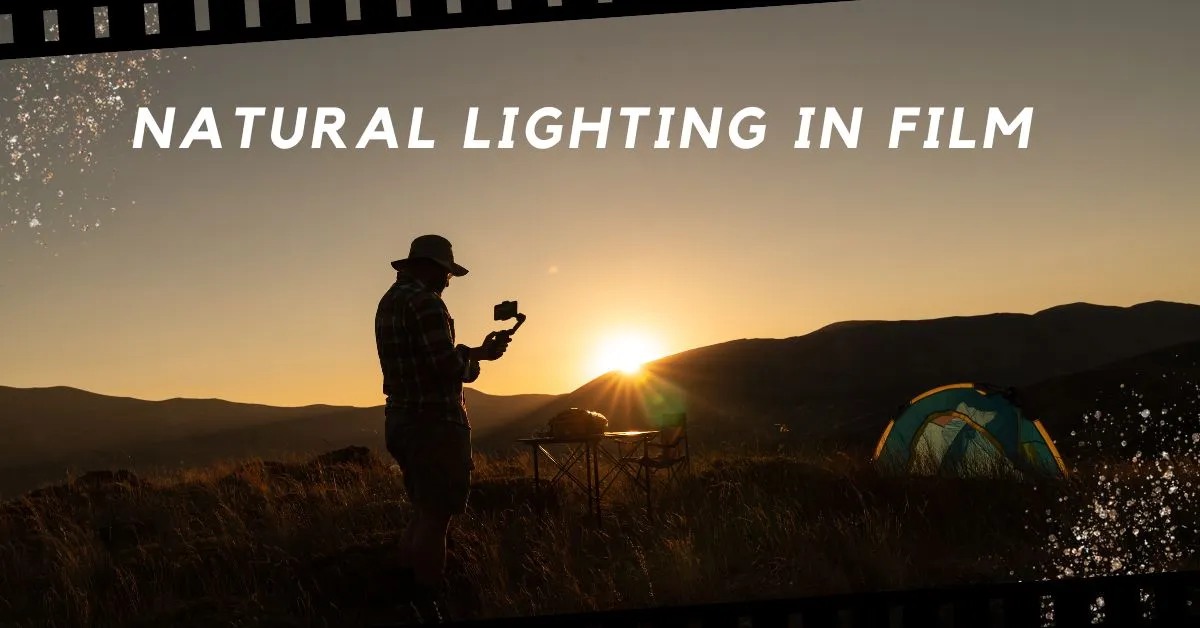Natural lighting in film refers to the use of available light sources, such as sunlight or
practical lighting, to illuminate a scene or capture visuals without the use of artificial
lighting equipment. It can provide a sense of realism, authenticity, and natural beauty to the
film, creating a connection between the audience and the on-screen world. Here are some key
aspects and considerations when working with natural lighting in film:
- Golden Hour: The golden hour, also known as magic hour, is the period
shortly after sunrise or before sunset when the quality of natural light is soft, warm, and
diffused. It offers a cinematic and visually pleasing look with gentle shadows and a golden
glow. Many filmmakers prefer shooting during this time to capture stunning visuals with a
magical quality.
- Natural Sunlight: Sunlight can be used as the primary light source,
providing illumination for the scene. Its intensity and direction can vary depending on the
time of day, weather conditions, and geographical location. Understanding the movement of
the sun and its impact on the scene is crucial for achieving desired lighting effects.
- Soft Diffusion: Natural lighting can create soft and diffused light when
it passes through various elements like clouds, curtains, or trees. This soft diffusion can
help reduce harsh shadows and create a gentle and flattering lighting effect on the
subjects.
- Silhouettes: Natural lighting can be used creatively to capture
silhouettes, where the subject is backlit, resulting in a dark outline against a brighter
background. Silhouettes can evoke a sense of mystery, drama, or symbolic imagery in
storytelling.
- Location Selection: When utilizing natural lighting, the choice of
locations becomes essential. Consider locations with large windows, open spaces, or scenic
landscapes that allow ample natural light to enter the frame. The orientation of the scene
concerning the sun's position can also affect the quality and direction of the light.
- Continuity Challenges: Natural lighting is dynamic and can change quickly.
Filming outdoor scenes over an extended period may require careful planning to maintain
visual consistency, as the lighting conditions can vary due to weather changes, clouds, or
the sun's position. Continuity management becomes crucial to ensure seamless editing and
consistent visual storytelling.
- Balancing Exposure: Natural lighting often presents challenges in
balancing exposure, especially when dealing with high-contrast scenes or backlighting. The
use of reflectors, diffusers, or bounce cards can help control the light's direction, fill
in shadows, or soften the contrast, ensuring that the subjects are adequately exposed.
- Unpredictability and Adaptability: Natural lighting is inherently
unpredictable, but it offers a unique opportunity for filmmakers to embrace spontaneity and
adapt to changing lighting conditions. Flexibility in adjusting camera settings,
composition, or blocking can help leverage the natural light available and still achieve
desired visual outcomes.
Natural lighting in film brings a sense of authenticity and a visually appealing aesthetic to the
screen. It requires a keen eye, careful planning, and the ability to adapt to changing
conditions. When harnessed effectively, natural lighting can enhance the storytelling, evoke
emotions, and create captivating visuals that immerse the audience in the cinematic experience


